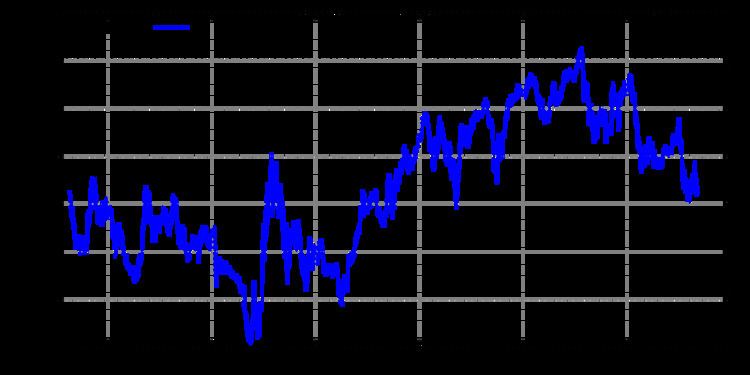Code HRK Symbol kn | 1/100 lipa lipa lp | |
 | ||
Plural The language(s) of this currency belong(s) to the Slavic languages. There is more than one way to construct plural forms. Freq. used 10, 20, 50, 100, 200, 500 kn | ||
The kuna is the currency of Croatia, in use since 1994 (ISO 4217 code: HRK). It is subdivided into 100 lipa. The kuna is issued by the Croatian National Bank and the coins are minted by the Croatian Monetary Institute.
Contents
The word "kuna" means "marten" in Croatian since it is based on the use of marten pelts as units of value in medieval trading. The word lipa means "linden (lime) tree".
History and etymology
During Roman times, in the provinces of upper and lower Pannonia (today Hungary and Slavonia), taxes were collected in the then highly valued marten skins. Hence, the Croatian word marturina or tax, derived from the Latin word martus ("marten"; in modern Croatian kuna). The kuna was a currency unit in several Slavic states, most notably Kievan Rus and its successors until the early 15th century. It was equal to 1⁄25 (later 1⁄50) gryvna of silver.
It has no relation to the various Slavic currencies named "koruna" (translated as kruna in Croatian) which means "crown".
In the Middle Ages, many foreign monies were used in Croatia, but since at least 1018 a local currency was in use. Between 1260 and 1380, Croatian Viceroys issued a marten-adorned silver coin called the banovac. However, the diminishing autonomy of Croatia within the Croatian-Hungarian Kingdom led to the gradual disappearance of that currency in the 14th century.
The idea of a kuna currency reappeared in 1939 when Banovina of Croatia, an autonomous province established within Kingdom of Yugoslavia, planned to issue its own money, along with the Yugoslav dinar. In 1941, when the Ustaše regime formed the Independent State of Croatia, they introduced the Independent State of Croatia kuna. This currency remained in circulation until 1945, when it – along with competing issues by the communist Partisans – disappeared with the establishment of FPR Yugoslavia and was replaced by the Yugoslav dinar.
Modern currency
The modern kuna was introduced on May 30, 1994, starting a transitional period from the Croatian dinar, ending on December 31, 1994. The exchange rate between dinar and kuna was 1 kuna = 1000 dinars. Since then, Croatia has been in a system of de facto currency board with a fixed exchanged rate. The kuna was pegged to the German mark from the start. With the replacement of the mark by the euro, the kuna's peg effectively switched to the euro.
The choice of the name kuna was controversial because the same currency name had been used by the Independent State of Croatia kuna, but this was dismissed as a red herring, since the same name was also in use during the Banovina of Croatia and by the ZAVNOH. An alternative proposition for the name of the new currency was kruna (crown), divided into 100 banica (viceroy's wife), but this was deemed too similar to the Austro-Hungarian krone and found inappropriate for the country which is a republic. The transition to the new currency went smoothly and the controversy quickly blew over.
The self-proclaimed Serbian entity Republic of Serbian Krajina did not use the kuna or the Croatian dinar. Instead, they issued their own Krajina dinar until the region was reintegrated into Croatia in 1995.
A long-time policy of the Croatian National Bank has been to keep the fluctuations of the kuna's exchange rate against the euro (or, previously, the mark) within a relatively stable range. The country joined the European Union on 1 July 2013 and it plans to join the European Monetary System. The kuna is expected to be replaced by the euro, even though the initial time estimate of two to three years after joining the European Union proved too short.
Coins
In 1994, coins were introduced in denominations of 1, 2, 5, 10, 20 and 50 lipa (Croatian word for linden or tilia tree), 1, 2, 5 and 25 kuna. The coins are issued in two versions: one with the name of the plant or animal in Croatian (issued in odd years), the other with the name in Latin (issued in even years). Overall more coins have been minted with Croatian names than with names in Latin.
Due to their low value, 1 and 2 lipa coins are rarely used. Since 2009, these coins are no longer minted, but the Croatian National Bank has stated that it had no plans for withdrawing them.
Commemorative coins
Commemorative coins have been issued since 1994.
